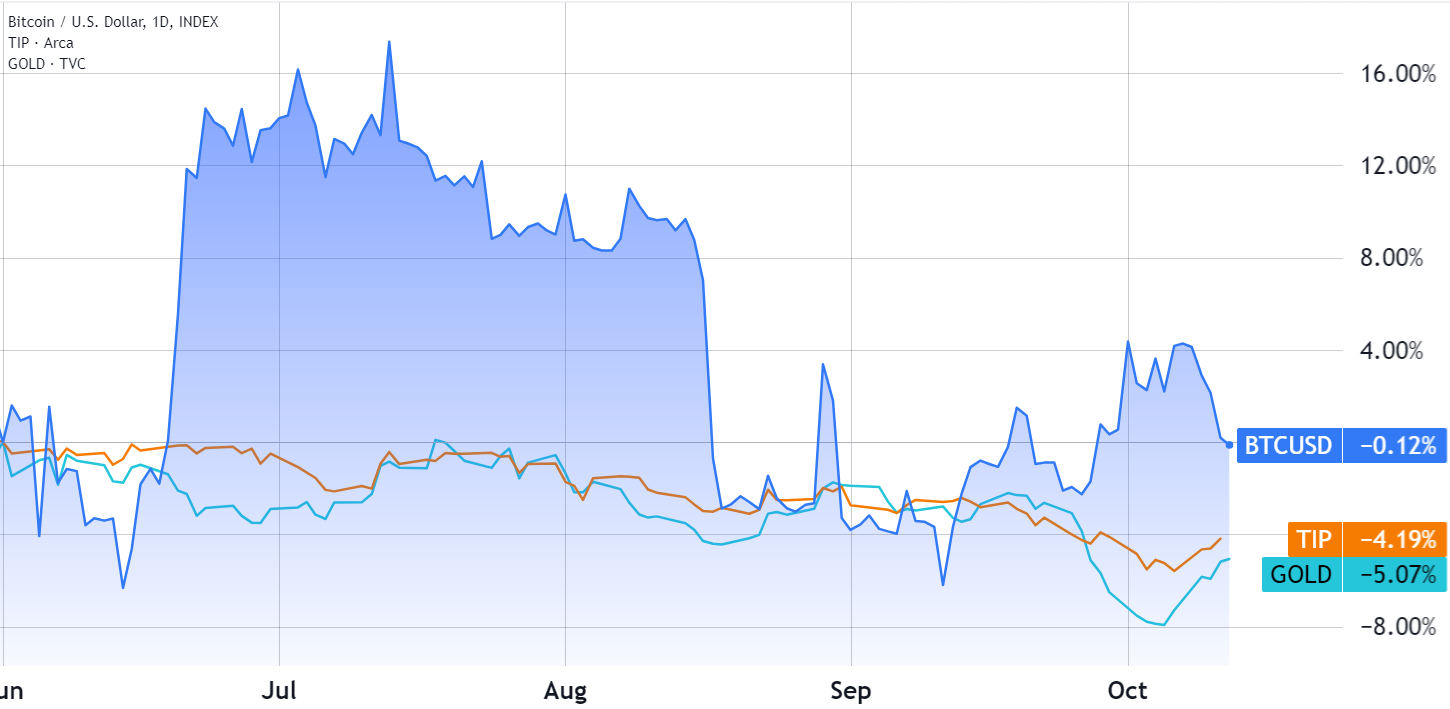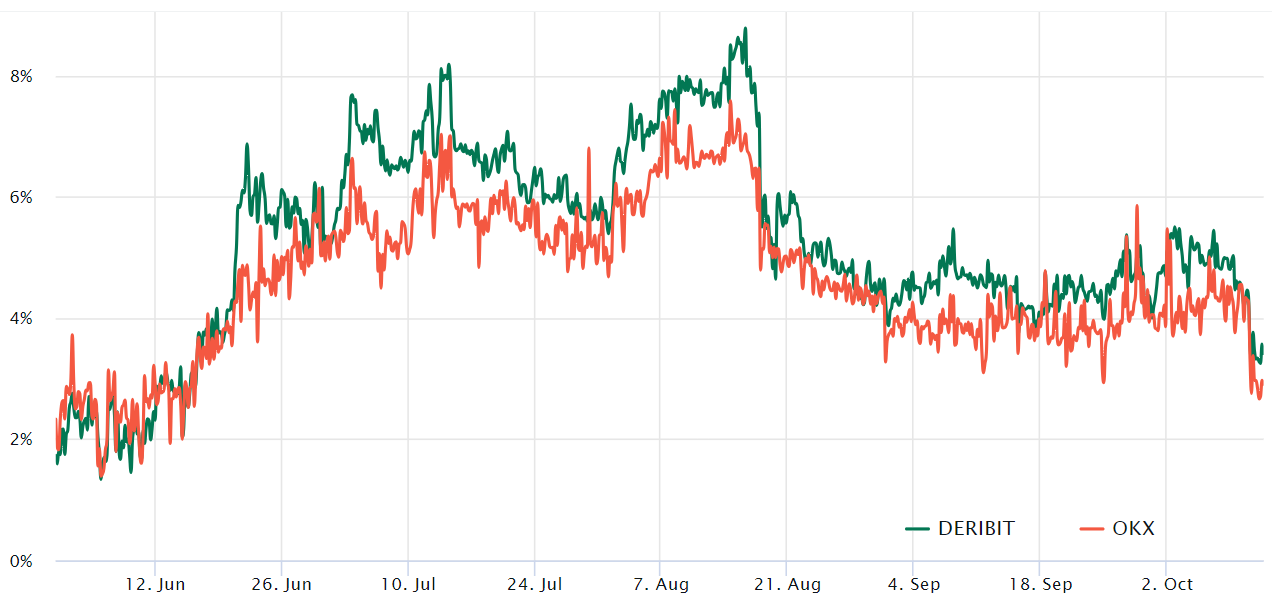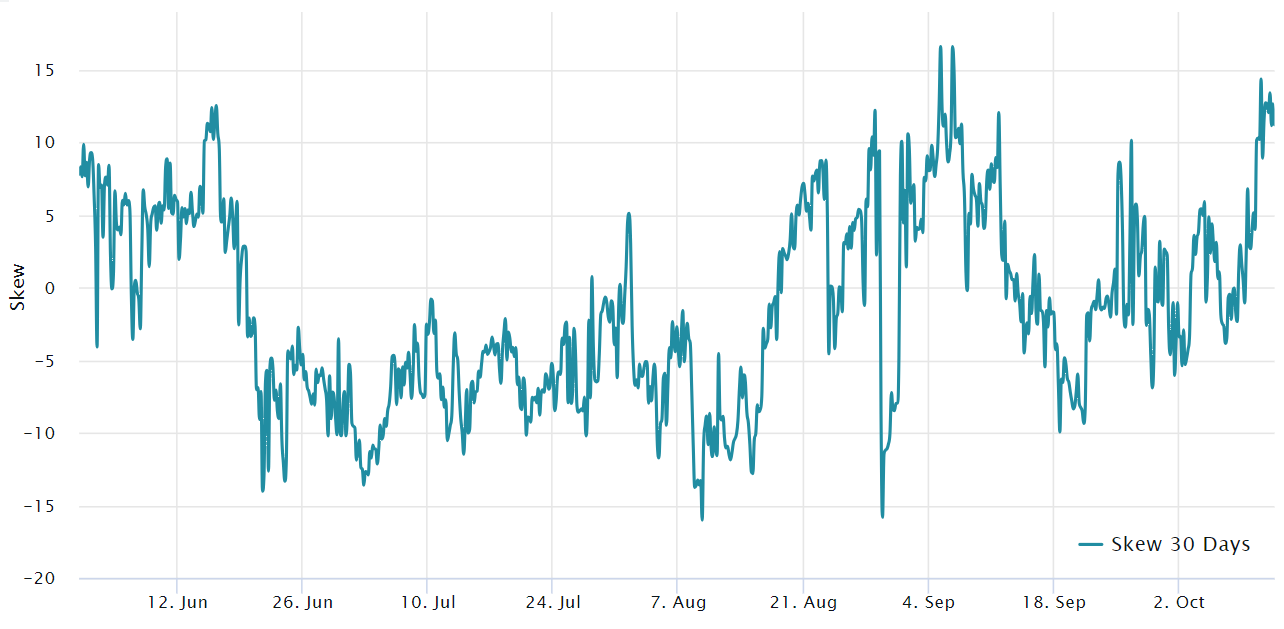Bitcoin (BTC) faced a 4.9% correction in the four days following the failure to break the $28,000 resistance on Oct. 8, and derivatives metrics show fear is dominating sentiment in the market, but will it be enough to shake Bitcoin price from its current range?
Looking at the bigger picture, Bitcoin is holding up admirably, especially when compared to gold, which has fallen by 5% since June, and Treasury Inflation-Protected bonds (TIP), which have seen a 4.2% drop during the same period. Merely maintaining its position at $27,700, Bitcoin has outperformed two of the most secure assets in traditional finance.
Given Bitcoin’s price rejection at $28,000 on Oct. 8, investors should analyze BTC derivatives metrics to determine whether bears are indeed in control.

$27,600 Bitcoin is not necessarily a bad thing
Regardless of how you frame this historic achievement, Bitcoin enthusiasts may not be entirely satisfied with its current $520 billion market capitalization, even though it surpasses global payment processor Visa’s ($493 billion) and Exxon Mobil’s ($428 billion) market capitalizations. This bullish expectation is partly based on Bitcoin’s previous all-time high of $1.3 trillion in November 2021.
It’s important to note that the DXY index, which measures the U.S. dollar against a basket of foreign currencies, including the euro, Swiss Franc and British Pound, is nearing its highest level in 10 months. This indicates a strong vote of confidence in the resilience of the U.S. economy, at least in relative terms. This alone should be enough to justify reduced interest in alternative hedge instruments like Bitcoin.
Some may argue that the 3% gains in the S&P 500 index since June contradict the idea of investors seeking cash positions. However, the top 25 companies hold a combined $4.2 trillion in cash and equivalents, in addition to being highly profitable. This explains why stocks are also being used as a hedge rather than a risk-seeking venture.
In essence, there is no reason for Bitcoin investors to be dissatisfied with its recent performance. However, this sentiment changes when we analyze BTC derivatives metrics.
Bitcoin derivatives show declining demand from bulls
To begin with, Bitcoin’s future contract premium, also known as the basis rate, reached its lowest level in four months. Normally, Bitcoin monthly futures trade at a slight premium compared to spot markets, indicating that sellers demand additional money to postpone settlement. As a result, futures contracts in healthy markets should trade at an annualized premium of 5% to 10%, a situation not unique to crypto markets.

To determine whether the rejection at $28,000 on Oct. 8 has led to decreased optimism among investors, traders should examine Bitcoin options markets. The 25% delta skew is a telling indicator, especially when arbitrage desks and market makers overcharge for upside or downside protection.
Related: Did SBF really use FTX traders’ Bitcoin to keep BTC price under $20K?
If traders anticipate a drop in Bitcoin’s price, the skew metric will rise above 7%, and periods of excitement tend to have a negative 7% skew.

Bitcoin derivatives metrics suggest that traders are becoming less confident, which can be partly attributed to the multiple postponements of the Bitcoin spot ETF decisions by the U.S. Securities and Exchange Commission, and concerns regarding exchanges’ exposure to terrorist organizations.
For now, the negative sentiment toward cryptocurrencies seems to invalidate any benefits arising from macroeconomic uncertainty and the natural hedge protection provided by Bitcoin’s predictable monetary policy. At least from a derivatives perspective, the likelihood of Bitcoin’s price breaking above $28,000 in the short term appears slim.
This article is for general information purposes and is not intended to be and should not be taken as legal or investment advice. The views, thoughts, and opinions expressed here are the author’s alone and do not necessarily reflect or represent the views and opinions of Cointelegraph.



Leave A Comment